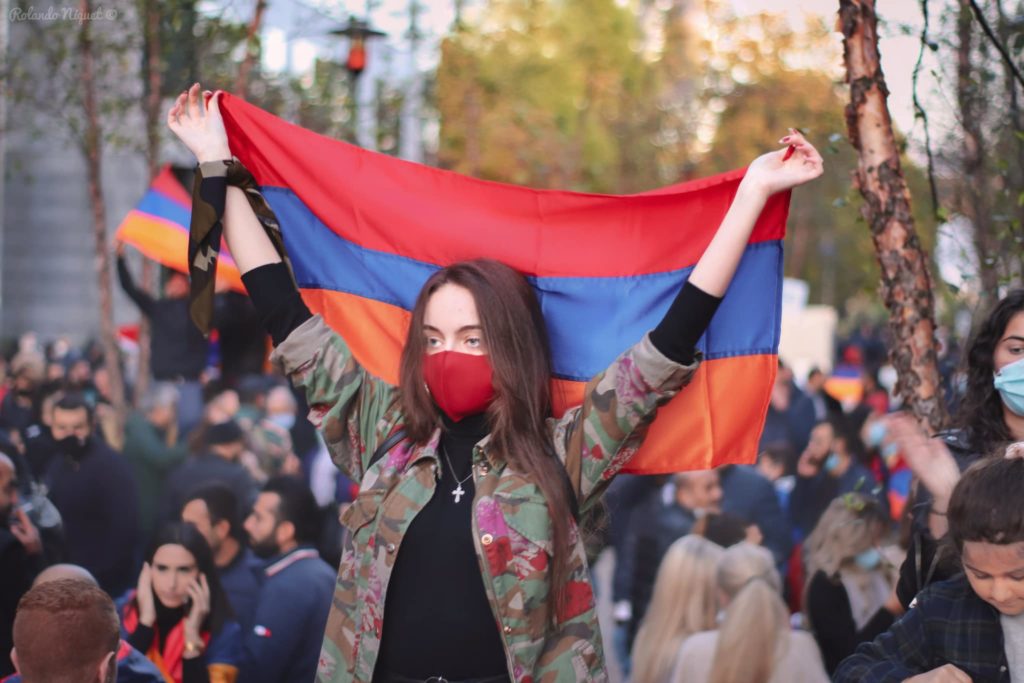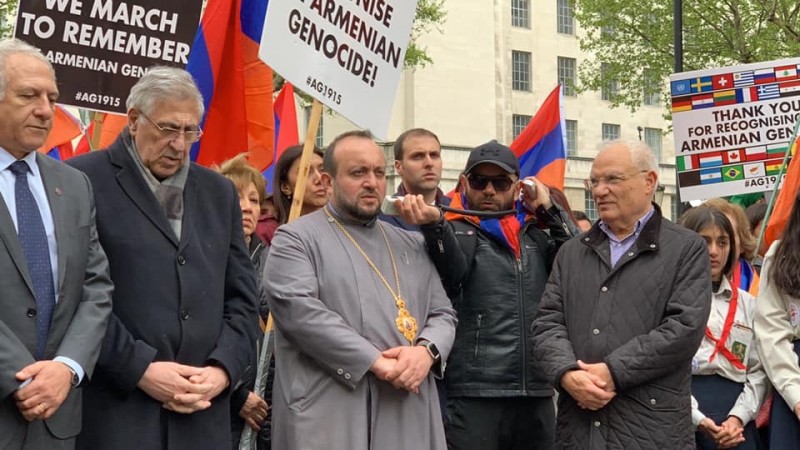Feature Article No: 02/21
6 September 2021
Brussels
By Susan Kim (*)
On his return from Armenia, Bishop Hovakim Manukyan, primate of the Armenian Church of the United Kingdom and Ireland speaks about the conflict in Nagorno-Karabakh (Artsakh), challenges faced by the Armenian citizens, and churches’ struggles in pursuit of lasting peace, justice and respect for human rights in the region. Manukyan serves as member of the Governing Board of the Conference of European Churches (CEC).
As the fallout of conflict weighs on the backs of Armenian villagers, “we have to pray and we have to speak more of this,” says Bishop Hovakim Manukyan.
When Manukyan visited the small villages along the Armenian border in the Syunik region, he saw firsthand how most recent conflict in the Nagorno-Karabakh (Artsakh) is weighing heavily on people who are simply trying to make a living in their land.
The Nagorno-Karabakh region is the subject of an unresolved dispute since 1988, with conflict involving Azerbaijan and the ethnic Armenian majority, backed by neighbouring Armenia.
“What I saw was uncertainty,” he said, “and also great pain and great loss because people are desperate. They lost the land where they were raising their livestock—their only means of survival.” Their situation is not only caused by intense fighting in November 2020 but also because of Azerbaijani encroachment onto their land in May 2021.
As he spoke to villagers, they told him that security is tenuous at best, even though peacekeeping forces are supposed to be in place. “Azerbaijani soldiers kidnap livestock and shepherds,” he said.
“It’s a volatile situation, and there is deep poverty,” said Manukyan.
With deep ties to the land, the villagers are also dependent on the flow of nearby rivers—but suddenly they find the river channels are being changed. “Water is an essential, life-giving matter,” said Manukyan.
Amid these deep concerns related to land and water, Armenian villagers are worrying and grieving over lost loved ones. “There are still a lot of POWs who haven’t been released,” said Manukyan. “The families are in a bad situation, and new funerals are still being held.”
Manukyan believes time is running out to improve the situation. “If we don’t provide some kind of help, they will flee from their homes, and we will have another wave of refugees.”

Protection for people, churches and monuments
Manukyan is outspoken about what he believes is a “revisionist history campaign” designed to “de-Armenianize” the monasteries and churches that exist in Artsakh.
There is mounting propaganda campaign in Azerbaijan against Armenia, which involves the rewriting of history and the large-scale destruction of architectural heritage.
Following six weeks of intense fighting for Nagorno-Karabakh (Artsakh) suspended by an agreement announced in November 2020 between the leaders of Azerbaijan, Armenia and Russia, Manukyan joined other religious leaders across the world in calling for a lasting peace founded on justice and human rights for the people of Nagorno-Karabakh (Artsakh) and the wider region.
Religious leaders have called for the protection of religious and cultural monuments. As member of the Committee for the Religious and Cultural Heritage Protection of Artsakh of the Mother See of Holy Etchmiadzin, Armenia, Manukyan has been dismayed by the desecration of monuments, especially in the areas newly under Azerbaijani control.
During his recent travels to Armenia, he also facilitated discussions between a newly founded initiative called “Save Armenian Monuments,” and church authorities in the Mother See of Holy Etchmiadzin. Save Armenian Monuments, in its first steps toward protecting historical and cultural sites in Artsakh and the wider region, was undertaking its first fact-finding mission to Armenia.
“There are many examples of destruction of churches that have been documented—but many more have not,” said Manukyan.
This year marks the 106th anniversary of the Armenian Genocide, carried out by the Ottoman Empire from 1915 to 1923, resulting in the deaths of 1.5 million Armenians. While that tragedy is increasingly being officially recognised by many world authorities, this does not assuage the ongoing fear of renewed genocide against Armenians.
It’s one body – one Church
Manukyan has deep concern for the many Armenian people across the world who must watch from afar as their homeland is desecrated and people live in fear. “As I travelled, I had people who came with me, but were denied the right to visit historic churches because they did not have an Armenia passport. This is a problem,” said Manukyan. “They want to go to support local Armenians and to pray in the churches. This is their homeland. It’s one body even though we live in different countries. And the Church—is one Church.”
Ultimately he insists on not just the protection of villagers in Armenia, and religious monuments but the human rights of religious minorities everywhere in the world.
“International experts should come to protect the rights of religious minorities, not only in Armenia but internationally,” he said.
What can we do? “First of all, churches have to pray,” he said. “And, internationally we have to speak more of this and increase awareness and accurate information. Wherever you are, raise the question with your government.”
From Coventry to Armenia: Video feature from Bishop Hovakim's travel to Armenia produced by the Armenian Church of the United Kingdom and Ireland
(*) Susan Kim is a freelance journalist from the United States.
Related news: Churches call for immediate end to military actions in Nagorno-Karabakh region
